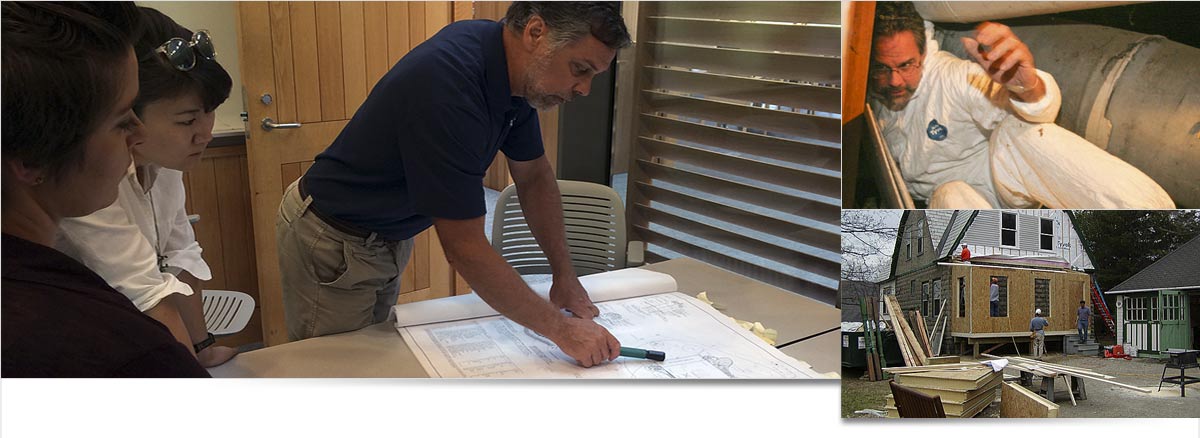
About Peter Yost
Peter Yost is the person you turn to if you want to truly understand how buildings work: their design, specification, construction, performance assessment. He brings more than 30 years experience in building, researching, teaching, writing, and consulting on high-performance buildings. His expertise ranges from construction waste management and advanced framing to energy efficiency, indoor air quality, moisture management, and building durability.
Peter has provided this building-science expertise to leading building industry high performance efforts, including USGBC’s LEED for Homes and REGREEN, EPA’s WaterSense, DOE’s Building America, and IWBI’s WELL programs. Peter is a Lecturer for Yale’s graduate program in Forestry & Environmental Studies, Technical Director for the web-based GreenBuildingAdvisor, and an Adjunct Faculty with the University of Massachusetts Department of Building Construction and Technology program. A LEED AP, he is a past co-chair of the USGBC’s LEED for Homes program, and a certified instructor/course author for the NAHB Advanced Green Building: Building Science certificate program. Peter’s work includes both academic and vocational instruction, field research on building products, building investigations, construction document review, and technical research and writing.
Peter is an Accredited Building Enclosure Commissioning Process Provider (BECxP)/Commissioning Authority+Building Enclosure (CxA+BE) – University of Wisconsin-Madison College of Engineering and Department of Engineering Professional Development (2016).
You may click here to download my resume.
Beauty goes more than skin-deep for high performance buildings. I work with architects and builders to achieve designs and materials that result in buildings tuned to their climate and site, successfully managing the elements for durable enclosures, comfortable and safe interiors.
Getting new buildings to work right is easy compared to understanding and then changing existing buildings, especially ones you know are not working right. I have a system for assessing old buildings, then using building science to make sure that what we do to them makes them work better, not worse.
Since completing my Master’s Thesis in 1993, a big part of my life has been technical writing related to building performance. From blogs to investigation summaries, from building product installation manuals to multi-year government project reports, I have honed my writing to be clear, concise, accurate.
I have developed curriculum for and taught building performance to high school trade students, graduate students in architecture and environmental management, and every type of building professionals you can imagine: engineers, architects, construction managers, code officials, trade contractors, and even a few bankers along the way. I tailor my materials to the length of the course and keep engagement high no matter who the participants are.
Most testing done in the building industry is done in labs under carefully prescribed and controlled environments, having NOTHING to do with what takes place in the real world. I work with building industry professionals and product manufacturers to develop field service life prediction testing under jobsite conditions. It’s testing where the rubber hits the road.

